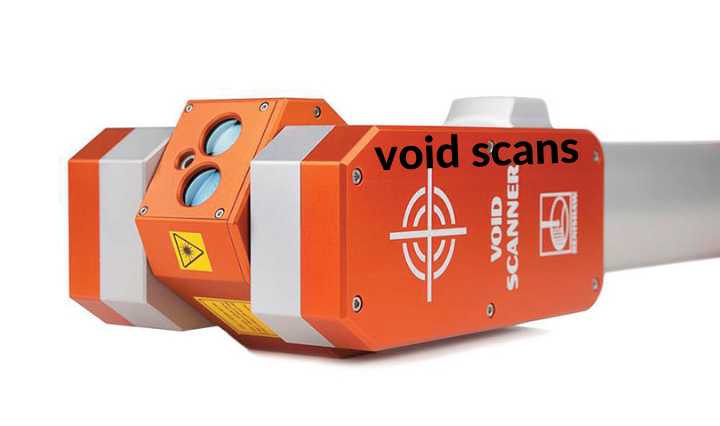Introduction: Peering Into the Unknown
Have you ever wondered what lies beyond the visible universe? The places where light doesn’t reach, where matter is sparse, and where the rules of physics seem to bend? Enter void scans—a groundbreaking technology that’s turning science fiction into science fact. These scans aren’t just about empty spaces; they’re about uncovering the secrets of the cosmos, one void at a time.
In this article, we’ll explore what void scans are, how they work, and why they’re causing such a stir in the scientific community. From cosmic voids to hidden dimensions, we’ll take you on a journey through the unseen universe. So, buckle up and get ready to have your mind blown!
What Are Void Scans?
Let’s start with the basics. Void scans are advanced imaging techniques designed to map and analyze regions of space where matter is scarce or entirely absent. Think of them as cosmic X-rays, but instead of looking at bones, they’re peering into the vast, empty expanses of the universe.
These scans use a combination of gravitational wave detection, quantum sensors, and AI algorithms to create detailed maps of these voids. The result? A treasure trove of data that’s helping scientists answer some of the biggest questions in astrophysics.
Why Are Voids So Important?
You might be thinking, “Why bother studying empty space?” Well, voids are anything but boring. Here’s why they’re a big deal:
- Cosmic Breadcrumbs: Voids can tell us about the early universe. By studying their size and distribution, scientists can piece together how the universe expanded after the Big Bang.
- Dark Matter Clues: Voids are like the negative space in a painting. They help us understand where dark matter—the invisible stuff that makes up most of the universe—isn’t.
- Hidden Dimensions: Some theories suggest that voids might be gateways to other dimensions. Crazy, right?
How Do Void Scans Work?
Alright, let’s get a bit technical—but not too much, promise! Void scans rely on a mix of cutting-edge technologies:
- Gravitational Wave Detectors: These pick up ripples in spacetime caused by massive cosmic events, like black hole collisions. By analyzing these waves, scientists can infer the presence of voids.
- Quantum Sensors: These ultra-sensitive devices measure tiny changes in energy and matter, helping to map the boundaries of voids.
- AI Algorithms: All that data needs to be processed, and that’s where AI comes in. It sifts through the noise to find patterns and create detailed void maps.
The Role of AI in Void Scans
AI isn’t just a buzzword here—it’s the backbone of void scans. Without it, we’d be drowning in data with no way to make sense of it. AI algorithms can:
- Identify subtle patterns in gravitational wave data.
- Predict the locations of undiscovered voids.
- Simulate how voids evolve over time.
It’s like having a cosmic detective on your team, solving mysteries faster than you can say “void scans.”
The Cosmic Void: A Window to the Past
One of the coolest things about void scans is how they let us travel back in time. No, not literally—but close enough! Because light takes time to travel, looking at distant voids is like looking into the past.
For example, the Boötes Void, one of the largest known voids, is about 700 million light-years away. When we scan it, we’re seeing it as it was 700 million years ago. That’s older than dinosaurs!
What Have We Learned So Far?
Void scans have already led to some mind-blowing discoveries:
- The Universe Is Lumpy: Turns out, the cosmos isn’t a smooth soup of matter. It’s more like a cosmic web, with dense clusters of galaxies connected by filaments and separated by voids.
- Dark Energy’s Fingerprint: Voids are expanding faster than the rest of the universe, giving us clues about dark energy—the mysterious force driving cosmic acceleration.
- New Physics?: Some void scan data doesn’t match our current models of physics. Could this mean we’re on the verge of a scientific revolution?
Void Scans and the Search for Hidden Dimensions
Now, let’s get a little wild. Some scientists believe that voids might be hiding more than just empty space. According to string theory, our universe could have extra dimensions that are curled up and hidden from view.
Void scans might be the key to finding them. By analyzing the behavior of particles and energy in voids, researchers hope to detect anomalies that could point to these hidden dimensions. It’s like looking for a secret door in a cosmic mansion.
Could Voids Be Portals?
Imagine if voids were gateways to other universes or dimensions. While this idea is still in the realm of speculation, are helping us test these theories. Who knows? One day, we might discover that voids are the ultimate cosmic shortcuts.
FAQs About Void Scans
Got questions? We’ve got answers!
1. Are void scans only used in space?
Nope! While they’re primarily used in astrophysics, have applications in other fields, like medicine and materials science.
2. How accurate are void scans?
Thanks to AI and quantum sensors, they’re incredibly accurate. But like any technology, they’re constantly improving.
3. Can void scans detect aliens?
Not directly, but they could help us find habitable regions of space by mapping the distribution of matter and energy.
4. Are voids dangerous?
Not at all! They’re just empty space—no black holes or cosmic monsters here.
The Future of Void Scans
So, what’s next for void scans? The possibilities are endless:
- Better Maps: As technology improves, we’ll get even more detailed maps of the universe’s voids.
- New Discoveries: Who knows what we’ll find? Maybe evidence of parallel universes or new particles.
- Practical Applications: Beyond space, could revolutionize fields like quantum computing and energy storage.
Conclusion: The Void Awaits
Void scans are more than just a scientific tool—they’re a gateway to the unknown. From uncovering the secrets of dark energy to searching for hidden dimensions, these scans are pushing the boundaries of what we know about the universe.

